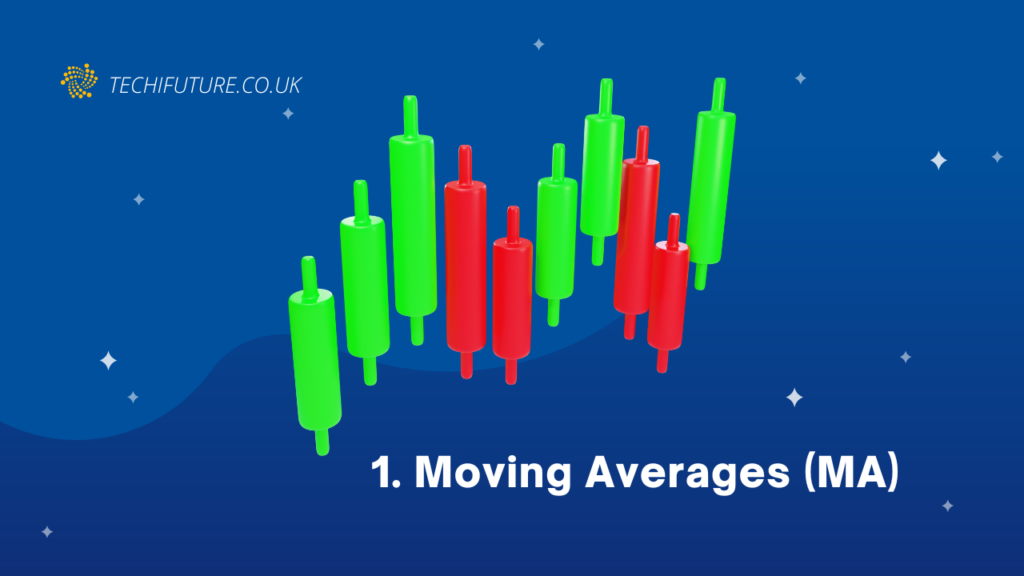Trading in Bankex (banking and financial sector stocks) offers great potential for profits. Leveraging the right charting strategies can significantly improve your ability to make informed trading decisions. In this article, we’ll explore the top five charting strategies that Bankex traders should adopt for better success.
1. Moving Averages (MA)

Simple Moving Average (SMA) and Exponential Moving Average (EMA) are essential tools for identifying trends. Moving averages help smooth out price data, offering insights into overall price direction:
- SMA: The SMA of 50 days or 200 days is often used to monitor long-term trends in the Bankex stocks. An ascending SMA signifies a bullish trend.
- EMA: The EMA weighs more on recent prices, which makes it more responsive and cryptos easier to spot in the short term.
MAs give you the opportunity to choose when to enter a trade or when to exit by following trends.
2. Bollinger Bands
Bollinger Bands measure price volatility, giving you an edge in Bankex trading. The bands adjust as per price movements:
- When a bank stock price touches the upper band, it could be overbought, suggesting a sell signal.
- Conversely, when the price nears the lower band, it may be oversold, signaling a potential buy.
This strategy helps in gauging the market’s volatility, especially in reaction to economic events that affect Bankex stocks.
3. Relative Strength Index (RSI)
The RSI measures momentum by showing whether a stock is overbought or oversold. This oscillating indicator moves between 0 and 100:
- An RSI above 70 typically indicates an overbought condition, meaning a correction may be coming.
- An RSI below 30 signifies that a stock is oversold and might rebound soon.
Traders can use RSI to identify reversal points and take advantage of price corrections.
4. Fibonacci Retracement

Fibonacci retracement levels help predict where price levels may reverse after significant movements. The key levels—23.6%, 38.2%, 50%, 61.8%, and 100%—serve as potential support and resistance areas:
- After a significant rise, you can use Fibonacci to spot retracement levels where the price might find support and resume its uptrend.
- During a downtrend, the levels act as resistance points where the price may reverse.
This strategy is ideal for determining where a Bankex stock could retrace before continuing its trend.
5. MACD (Moving Average Convergence Divergence)
The MACD helps identify changes in momentum and trend direction by comparing two moving averages:
- When the MACD line crosses above the signal line, it’s a bullish signal—ideal for buying opportunities.
- Conversely, a crossover below the signal line signals bearish momentum, making it a potential selling point.
The MACD is helpful in spotting trend reversals and confirming momentum shifts.
Conclusion
Having great charting strategies that can elevate your success in the Bankex market. When used together, Moving Averages, Bollinger Bands, RSI, Fibonacci Retracement and MACD help traders understand trends & volatility (trend indicators), momentum (momentum indicators), or price level (converging).
Keep in mind that these strategies will be even better suited to your risk appetite and style when you partake in experimenting with them yourself on TradingView India.
FAQs
Q1: What Bankex traders should chart strategy?
All strategies have advantages, but when MA signals coincide with a MACD signal, you know the trend and momentum are in confirmation – which is very important in an unpredictable market like banking.
Q2: What are Bollinger Bands and how do they help with trading Bankex
The Bollinger Bands help us to Calculate the volatility of the market. Specifically, if the prices are close to the upper band, it signals overbought conditions and when close to the lower band it signals oversold conditions which is great for fast trading.entry exit
Q3: What is the RSI, and how does it work as Bankex?
The Relative Strength Index (RSI) indicates the overbought or oversold position of a stock. This can be used as a guide for identifying trends reversals in Bankex stocks. Above 70 is overbought and below 30 is oversold on the RSI.
Q4: How can Fibonacci Retracement help us to determine our entry and exit points?
Question 7: Can Fibonacci levels help you spot reversal support and resistance? These levels assist traders in establishing effective entry and exit points while prices retrace.
Question 5: Use MACD to improve on Bankex trades?
MACD is used to find changes in momentum or reversals. When the MACD line charts above the signal line, that is a buy signal and when it8230; Read more. It is therefore perfect for verifying trade decisions.
By understanding and applying these top five charting strategies, Bankex traders can make well-informed decisions and increase their chances of success in the dynamic world of banking stock trading.
SEO Optimized Title: “Top 5 Charting Strategies for Bankex Traders to Maximize Profits”
Meta Description: “Discover the top 5 charting strategies for Bankex traders, including Moving Averages, Bollinger Bands, RSI, Fibonacci Retracement, and MACD. Learn how to leverage these tools for informed trading decisions in the banking sector.”
Top 5 Charting Strategies for Bankex Traders: A Guide to Maximizing Your Trading Potential